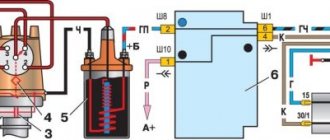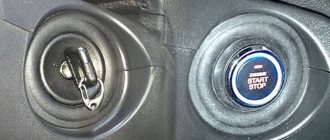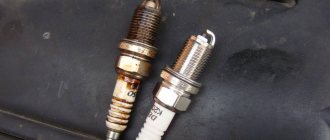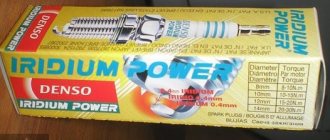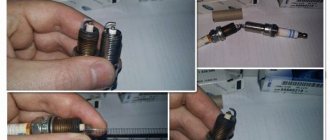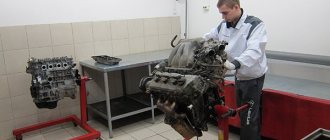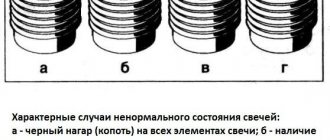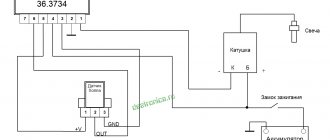Spark plugs are an essential element of a gasoline engine, creating a spark to ignite the mixture of fuel and air in the combustion chamber. As a rule, the service life of ordinary budget candles is limited to several tens of thousands of kilometers (15-25 thousand), that is, these elements are so-called consumables.
Experienced drivers know well that the stability of engine starting, engine power, fuel consumption and other characteristics directly depend on the quality of spark plugs. It is important to understand that after just a few thousand or even hundreds of kilometers (depending on the general condition of the internal combustion engine, fuel quality, etc.) the spark plugs begin to work less efficiently.
As a result, the engine begins to “pull” worse, the driver presses the gas harder, while more fuel in the cylinders still burns less fully. In other words, there is an increased consumption of gasoline. It is for this reason that many drivers practice modifying spark plugs to save fuel, which we will talk about next.
Why did the question arise about how to improve spark plugs with your own hands?
Finally, the era has begun when a vehicle is not an excessive luxury, but a means of transportation. Brands of cars from domestic manufacturers are already available at affordable prices, and a secondary car market system has been established, where it is very easy to buy a car second-hand and exchange it for a more budget model. It seems that there are no longer any restrictions and conventions for a person who wants to buy a car. There is a vehicle to suit every pocket.
Spark plug
There are more and more people who are ready to buy a car at an affordable price, and then tune it and modernize it. And this category of people is themselves creative, capable of experimenting, taking decisive steps, and even seriously thinking about how to improve spark plugs with their own hands.
Tuning
Perhaps a used foreign car will not give in in some way, will not allow itself to be remade, but, as they say, nothing is impossible. The structure of domestic machines is more open, and it opens up a wide field for the activity of the imagination. So there are those craftsmen who think about how to improve spark plugs with their own hands. What motivates automobile “Kulibins”, what do they want to achieve?
Experienced experimenters claim that they know exactly how to improve spark plugs with their own hands. When they managed to perform this procedure, that is, bleed the spark plug, they achieved the desired results:
- The spark is not blown away by the resulting pressure
- All possible engine performance increases almost before our eyes
- Gasoline burns completely, so less fuel is consumed.
- The machine control system is working properly.
Another reason why some people want to improve the performance of a candle. After all, many people know that its service life is short, lasting an average mileage of 15,000 km, and then you need to monitor its condition, assess whether carbon deposits appear on it, or whether the housing or electrode may even be damaged.
New candle diagram
All words of indignation addressed to the candle appear at the moment when visible problems with the car manifest themselves, the vehicle jerks or loses its power. And who will like it! That’s why there are brave souls who are able to radically decide how to improve spark plugs with their own hands and no longer think about gasoline consumption or loss of power of a reliable car. Opponents may remind you that although the candle will be improved, its lifespan cannot be extended. And in general, who will guarantee that the calculations were chosen correctly, that the innovative work being carried out will not turn into disaster and further costs for repairing the vehicle and its expensive components.
What will be achieved during modernization?
After cutting off part of the electrode, the spark front will increase, so the flame will go straight into the combustion chamber. As a result, we should expect complete combustion of gasoline, a small but increase in vehicle power.
- The second way to improve spark plugs with your own hands is to carefully bend the electrode, simply forcibly increasing the distance between the components of the spark plug. Many people resort to this method, but due to lack of skill, the spark plug can be damaged. And remember that you cannot remove a faulty spark plug from the system; it will be very difficult to foresee the consequences.
Bend the electrode
Thus, you can determine several answers to the question of how to improve spark plugs with your own hands, and they will be polar. Firstly, if changes are introduced into the system, the calculations must be verified. Secondly, you should not push the car beyond its capabilities, because by increasing its power by force, you can actually reduce its service life.
We would like to know how many car enthusiasts are in favor of improving the spark plug, and who definitely says “no” to such an idea. State your position in the comments, we will be grateful for it.
What can happen if you improve your spark plugs yourself?
- It is possible to achieve fuel savings. This is the main “engine” of all the actions of innovators who know exactly how to improve spark plugs with their own hands and reduce gasoline costs.
- Innovators want to increase the power of the vehicle, thinking that by changing the degree of caviar supply, they will increase the performance of the power unit. An impressive argument for drivers who cannot live without high speeds. But opponents of the idea of improving spark plugs remind that any design features of a vehicle are driven into its limiting capabilities. And if you only influence the degree of spark supply and don’t change anything else, then whether progress in implementing the idea is possible or not is still a big question. You need to solve the question of how to improve spark plugs with your own hands with a cool head and nerves of steel, as well as with a large amount of knowledge and experience in conducting experiments.
- It seems that it is possible to increase the dynamics of the car. Every driver dreams of influencing the maneuverability and responsiveness of a car, and the bravest think about how to improve spark plugs with their own hands.
- There is a desire to stabilize the combustion of the mixture so that it occurs quickly and evenly. An understandable desire, but the combustion process depends on many factors, not just the spark of the spark plug.
Reworking spark plugs
Check and doubt
You can check the operation of modernized spark plugs by building a simple stand in the garage from a distributor, a coil and a battery. It will be immediately visible to the naked eye that the spark produced by the spark plug has improved and intensified.
Thus, in fact, the old candle will continue to work efficiently for quite a long time. The only thing that raises some suspicions is: why do some manufacturers continue to produce products that are not finished using this method? And doesn’t such modification of spark plugs with your own hands kill the car’s engine? But, judging by the reviews, there is no particular harm to the engine. But it saves money and fuel resources.
What does anyone think about this? Cut off the side contact and + 5What does this give:
+ easier engine starting in any climatic conditions
+ more stable operation at non-optimal mixture values and at high speeds
+ reduces the likelihood of spark blowing at high boost pressures
+ due to faster and more complete combustion of fuel, engine performance and response are improved
+ increases fuel efficiency (reduces consumption)
Two ways to improve spark plugs with your own hands
- Spark plug upgrades are performed only on gasoline engines. One of the common upgrade options is to shorten the electrode, thus opening up the possibility of adjusting the gap. The desired result is to shorten the electrode so that the central one does not overlap with the lateral one, but remains dominant. What is the algorithm of actions?
Spark plug electrode
- Using a simple marker, mark on the electrode the location of the desired cut off of the part.
- Clamps the candle in a vice and continues to adjust the shape of the product.
- Using a grinding machine, we cut off the unnecessary segment that was previously marked.
- We clean the cut-off area with a file suitable for cutting. The goal is to remove unevenness and roughness, and chips.
- We adjust the gap required according to the diagram. The distance depends on the make of the machine and the expected load on it.
- All that remains is to return the upgraded spark plug to the standard seat. And start the car, evaluating the result obtained and realizing whether you managed to professionally solve the problem of how to improve spark plugs with your own hands.
Stage-by-stage development
- In order for the spark plug to become effective again, we need to use a simple tool to make the electrode on the side shorter, and then start adjusting the gap. Moreover, the shortening must be done so that the central electrode does not overlap with the side one;
- We unscrew the candle on which you plan to perform these actions from its location (or, as an option, take a new one);
- Using a glass marker, mark on the desired candle the length to which the side electrode needs to be cut.
- We fix the spark plug in a small vice (the main thing is not to overtighten);
- Take a grinder (Dremel or any other company) with a cutting disc installed. Carefully shorten the electrode, which is located on the side. The result should be a smooth, parallel cut, not slanting to the sides;
- We clean the place of the cut with a file to remove burrs and irregularities;
- Next, set the specified gap
. It is different on different brands of cars and trucks, domestic and foreign, turbocharged and not. So, in this case, it is better to navigate through a book or look on the Internet; - A similar procedure must be performed with each candle separately. Then we screw them into place and try to start. I think you should like the effect produced.
Speed is the enemy of your money
You've probably already heard about this: the higher the speed of the car, the higher the fuel consumption. What about the real numbers? Aerodynamic drag, which leads to increased fuel consumption, is not so noticeable in urban driving conditions. The highest fuel consumption begins at speeds above 90 km/h. Increasing speed from 90 to 105 km/h, aerodynamic air resistance increases by 36 percent! If you often drive on the highway and try to get to your destination faster at maximum speed, then your fuel costs may increase by 17,500 - 21,500 rubles per year. Stick to a speed of 80-90 km/h and, if possible, use cruise control on the highway. It will pay off.
Replace your broken or damaged spoiler
A plastic “apron” or plastic wing helps not only sports cars cope with aerodynamic drag. In all cars, plastic aerodynamic elements serve to reduce fuel consumption. Damaged aerodynamic elements can lead to increased consumption of gasoline or diesel fuel.
If a plastic element under your car is damaged, then air flows begin to dissipate incorrectly, which creates increased air resistance, leading to increased fuel consumption.
Diagnostics: looking for a spark plug with a defect
Problems can be identified visually even with the naked eye. However, damage is obvious when the car runs unevenly and stalls. It is worth remembering that malfunctions of this kind make it impossible to ignite the fuel-air spark plug in the cylinder.
As a result of the fact that fuel does not burn, it can get into the catalyst. There will be a strong smell of gasoline. Another clear sign of a faulty spark plug is a significant increase in fuel consumption. This happens because the mixture does not burn completely due to misfires.
Maintaining tire pressure: Fuel savings up to 30,000 rubles per year
Driver surveys show that 60 percent of cars on the road have low tire pressure. On average, the pressure in most cars is 30 percent lower than it should be. This is approximately 0.62 bar lower than the manufacturer's recommendation. This leads to increased fuel consumption by 7 percent (per year you can overpay for gasoline by approximately 8,545 rubles or, in terms of a liter of gasoline, this is 60 kopecks).
In addition, low atmospheric pressure in tires leads to premature tire wear. This may cost you an extra 10,500 rubles over the entire life of the tire.
To constantly monitor tire pressure in accordance with the car manufacturer's recommendations, we recommend that you check the tire pressure every two days, using a separate pressure gauge or a pump with a built-in pressure sensor. Remember that changes in ambient temperature can significantly change tire pressure. Therefore, if there is a sudden change in temperature outside, it is necessary to check the pressure.
Replace the oxygen sensor
Oxygen sensors monitor the efficiency of fuel combustion by measuring the amount of oxygen remaining in the exhaust gases. But over time, the sensor measurements deteriorate due to its natural wear and tear. This increases fuel consumption by up to 15 percent. It is worth noting that when the oxygen sensor completely fails, the “Check Engine” icon lights up on the dashboard. On older cars before 1996, the oxygen sensor had to be changed every 95,000 - 100,000 km. On modern cars, the sensor can operate up to 160,000 kilometers of the vehicle. The cost of sensors varies depending on the brand and model. Prices start from 1,800-2,500 rubles. Some models have four oxygen sensors located behind the catalytic converter. But they very rarely fail. By replacing the oxygen sensor, your expenses will pay off in less than 6 months.
Monitor the condition of your tire tread: Fuel savings of up to 6,220 rubles per year
If your tires are significantly, unevenly worn and have a small tread depth, then with a mileage of 32,000 kilometers, add another 165 kilometers to your mileage. Due to bad tires, your fuel costs per year will be 6,220 rubles more.
There is an easy way to check the condition of your tires. To do this, you need to buy a device that measures the tire tread depth. The device must be used to check the depth of the outer tread of each tire. Remember that in most cases, tires wear unevenly, which leads to increased fuel consumption. Therefore, as a rule, if the mileage of the car is not very high, there is no need to change the tires to new ones. It is enough to carry out wheel alignment work at a tire shop, which will reduce fuel consumption.
Replace the air filter: Fuel savings up to 12,250 rubles per year
Your engine sucks in 63,645,288 liters of air over the course of a year, which passes through the air filter. On older cars built before 1999, a dirty air filter increases fuel consumption by 10 percent (12,250 rubles per year or per liter of gasoline, you lose 2.75 rubles because you fill up more often than expected). On new cars, the computer engine control unit detects air filter contamination in a timely manner and makes adjustments to the fuel injection program, reducing increased fuel consumption. But this is reflected in the power of the car, which decreases. With a dirty filter, the loss of power will be noticeable when the car is loaded.
When changing engine oil, be sure to check the condition of the air filter. Change it at least once a year. If you operate your vehicle in dry and dirty conditions, we recommend changing the filter more often.
